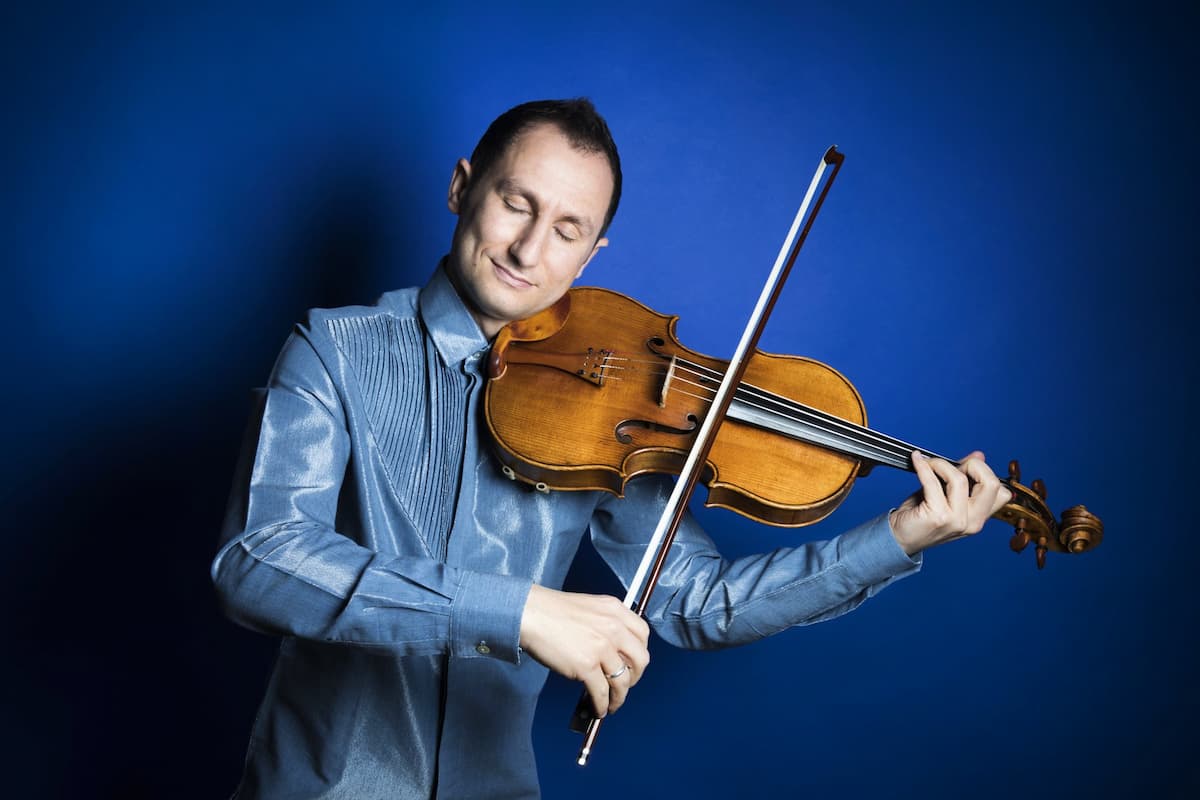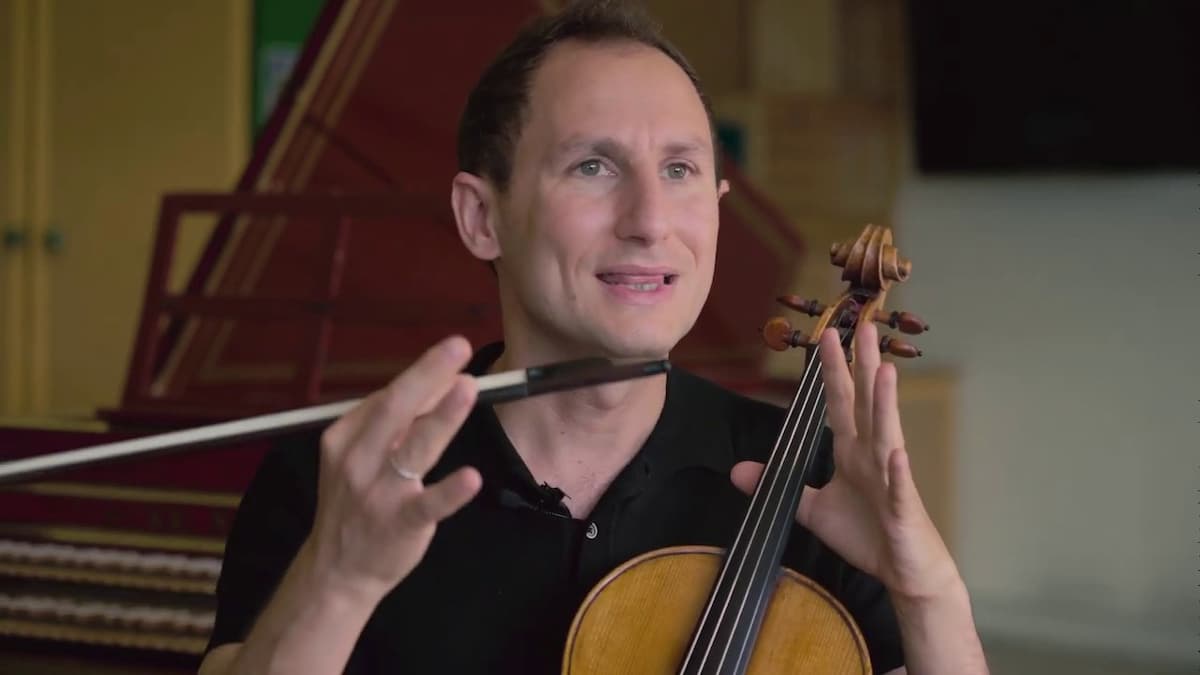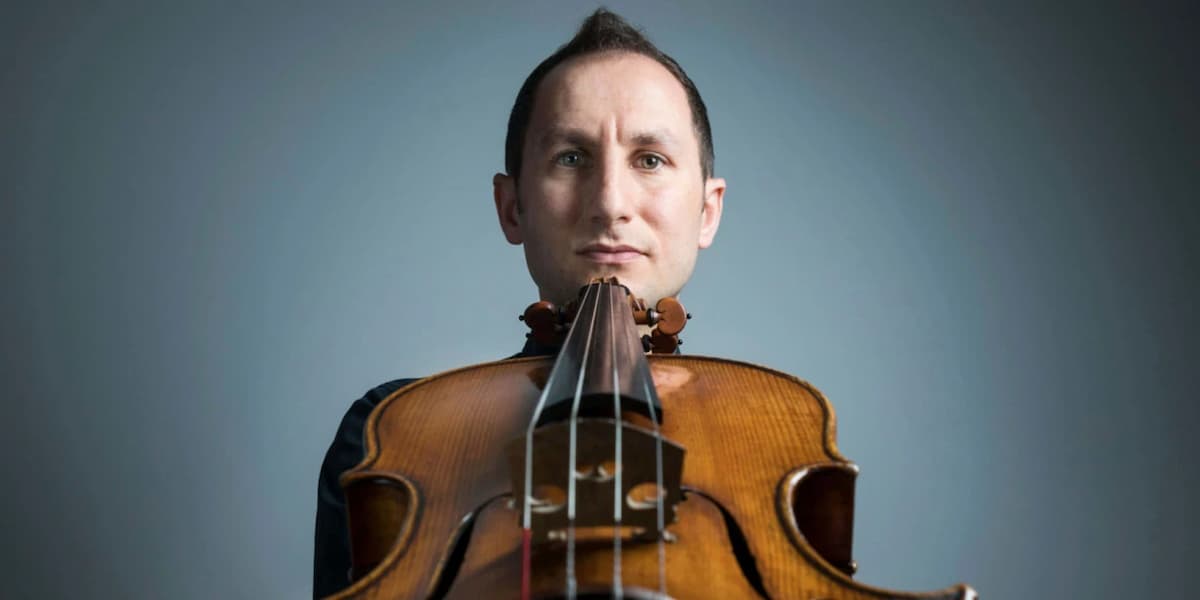Considered one of the most gifted French musicians of the era, violist Antoine Tamestit “possesses a flawless technique and combined effortless musicality with an easy communicative power.” A prize winner at the William Primrose Competition in 2001 and the ARD International Music Competition in 2004, Tamestit was presented with the Credit Suisse Young Artist Award in 2008. He has premiered several contemporary compositions, including works by Thierry Escaich, Olga Neuwirth, and the Viola Concerto by Jörg Widmann.
Antoine Tamestit Performs Widmann’s Viola Concerto
Musical Family

Antoine Tamestit
Born in Paris on 11 July 1979, Antoine Tamestit was surrounded by music from the very beginning. His father was a violinist and composer, and both parents listened to music all the time. And that meant listening to all music, ranging from Pergolesi to Jacques Brel. As Antoine remembers, “modern sounds, techniques and effect have never surprised me. I listened to all styles of music on an equal footing,” and realised that music really has one goal, and that is “to create emotion.”
Although there was never any pressure on Antoine to become a musician, he always had dreams of becoming one. He recalls being particularly struck as a youngster when his father showed him a video of great violinists playing concertos. “One point in particular stuck in my mind from this video, during which the soloist was isolated and played a single held note, and everybody, the audience, orchestra, and conductor listened so intently to that one note, making it feel as if time was suspended.”
Tamestit/Tiberghien Perform Brahms’ Viola Sonata, Op. 120 No. 1, “Andante”
First the Violin

With two violinists, including his aunt, in the family, Antoine asked for a violin for his 5th birthday. His father had been encouraging him to start exploring the instrument and basically to have fun with it. As he remembers, “he really did not want to force me as he had also given a violin to my brother, and he ended up giving it back, so he didn’t want to make the same mistake again with me.” Since Antoine still enjoyed playing the violin, it was time to start formal lessons.
While his father had taught him how to play and enjoy the violin, Antoine went “on to a teacher who was wonderful, which I believe is so important. The first teacher must not damage anything to do with your enjoyment and pleasure for the instrument because you have to keep practicing every day.”
Antoine Tamestit Performs Martinu’s Rhapsody Concerto for Viola and Orchestra
Then the Viola
After hearing the Bach Cello Suites around the age of nine or ten, he asked his teacher if he could try out a lower-pitched instrument. They first tried the cello, but it became quickly evident that he didn’t feel comfortable “because it would have meant starting again due to the positioning being so different.” His teacher then told him about an instrument that he could play the Bach Suites on because it had the same tuning. “And that’s how I approached the viola.”
Antoine had the impression of having gained two instruments for the price of one. In the viola, he found all he liked in the violin and all he liked in the cello. He certainly fell in love with the instrument in an instant. As he calls it, “it was love at first sight, a thunderbolt that has never been extinguished.” Tamestit went on to study with Jean Sulem at the Conservatoire de Paris, with Tabea Zimmermann, and also with Jesse Levine at Yale University. He credits Levine for providing him with a personal compass in life, as “what is most important at the end of life is not to have had all the answers, but if possible to have asked all the questions.”
Tamestit/Suzuki perform Bach: Viola da Gamba Sonata in G minor, BWV 1029 (arr. viola and keyboard) (Antoine Tamestit, viola; Masato Suzuki, harpsichord)
Holistic Approach

Tamestit’s musical evolution relied on three fundamental factors; personal work, stage experience and education. As he explained in an interview, “the very specific emotion of being on stage helps you to progress and develop in your personal work. Teaching has come to be an important parameter to my life, as well… Students help me to discover hundreds of issues and questions about different pieces. It forces me to deepen and push my own reflection a little more.”
He absolutely loves teaching masterclasses worldwide. For Tamestit, they are unique moments during which “we have the chance to illuminate something, to trigger some insights.” The quality, intensity, and beauty of the sound are the most important elements in his work as a musician. “For me,” he explained in an interview on Violinist.com, “any success, even if we speak of technical success, is ultimately a success of sound. All work in music is directed toward the success of sound and its expression.”
For more of the best in classical music, sign up for our E-Newsletter
